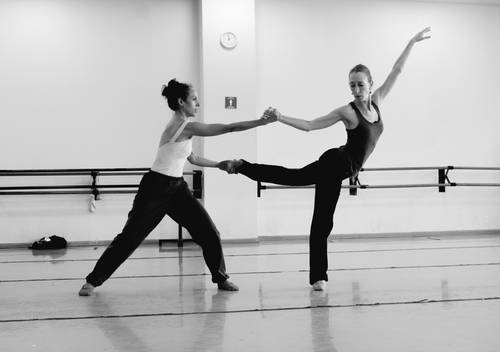With the purpose of having Carmina Burana in the repertoire of the Choreographic Workshop of the National Autonomous University of Mexico (TCUNAM), its director, Irina Marcano, created a neoclassical dance proposal with the score of the German Carl Orff, which requires a deployment of 23 dancers on stage.
The dance version of Carmina Buranawhich will be performed on June 21 and 28 in the Theater of the Faculty of Architecture and on the 23 and 30 of the same month in the Miguel Covarrubias room, is full of dynamic and rhythmic images that are accompanied by a recording by the University Philharmonic Choir.
“Carmina Burana It is a world-famous cantata that is beautiful. In addition to the power of the music, the choirs, the sound and the dance in unison attract my attention. I love all that about this piece and it is what I associated scenically in the choreography,” Marcano comments in an interview.
Most of the time, the entire company participates on stage; The dance groups transmit the magic and power of the group. According to the choreographer, “you can feel the strength of the piece with that very particular and unique narrative that speaks of the fortune of life and how we are born, die and start again over and over again.
There is the cyclical sensation marked by the infinite wheel of life and fortune. I also used that as a narrative in the stage proposal, which is amalgamated with the musical power and the choirs.
. About the music he adds: We are using a recording of the University Philharmonic Choir. It is a choir version, two pianos and percussions. The musical value that the choir acquires is wonderful and was interesting
.
Marcano specifies that the proposal is neoclassical in nature, “the language is also emblematic of the Choreographic Workshop used by teacher Gloria Contreras, a species that has this basis of classical training, but addressing other concepts and other ways of removing the body from that structure that formed for many years the neoclassical language and that I am now using to Carmina Burana”.
With this large-format work, which is committed to interpretive strength and scenic minimalism, the TCUNAM closes its 111th season called From roots to new fruits. This first season that I direct has been a six-month journey always inspired by the work of teacher Gloria Contreras, involving her pieces in our performances and language as the essence of the choreographic workshop
.
The creator commented that great stage work is needed for this piece as it is a very well-known piece of music with a lot of power. “There are many versions of Carmina Burana and it is complex to approach it with a scenic approach that feels different and at the same time typical of TCUNAM, so that they go to see it and say ‘yes, it is the Choreographic Workshop’.
In the work, stage composition, group composition, play with timing, rhythm were added, where the soloists have greater relevance both in terms of dance and the choral voice and the arias. We play with all that on stage. At times there is the group, sometimes the corps de ballet joins the choir; then there is a very strong choir and we only have one soloist. All of this play creates a visual scenic composition that combines music and dance with showiness.
The choreographer considers that TCUNAM “is an ideal company to transform and approach a work like Carmina Burana. It is a very versatile group and that gives you many creative possibilities.”
The stage design is minimalist, With the same theater curtains we build different spaces that will have a very particular mobility, but always using lighting as the main scenic axis combined with dance
.
In the center of the stage a red box will stand out, the floor will also be that color and the intention of the proposal changes according to the corporality and interpretation.
Carmina Burana, by Irina Marcano, will be staged on June 21 and 28 at 12:30 p.m. in the Estefanía Chávez Barragán Theater of the Faculty of Architecture, and on June 23 and 30 of the same month, at 12:30 p.m., in the Miguel room Covarrubias from the UNAM University Cultural Center (Insurgentes Sur 3000).
